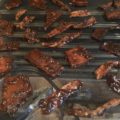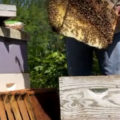In this video, I am pulling queens from hives that are not performing to my standards. Reasons range from poor laying patterns, aggressive behavior… anything that I don’t want to see in my colonies. There are many philosophical views on this, but for me, making up new splits or re-queening poorly-performing colonies helps ensure I have several good hives going into the next season. I consider them my honey-making hives. A young, vigorous queen can help prevent swarming, help mite control, fast build-up in the spring and many other “ailments” to a hive.
I don’t just re-queen automatically… but I do select the colonies that are not performing the way I want them to. I’ll let these hives be queenless for at least 24-hours to help them more readily accept the new queen cells. Another thing I do not mention in the video is to make sure you search for any queen cells left in the hive as well. A couple of hives already had supersedure cells in them (meaning the bees had already planned to replace their queen) and we don’t want these queens emerging and destroying the new queen cells we’re putting in the hives.
Do you ever replace queens in your colonies? If you do, I’d love to know why in the comments below.





Leave a Reply